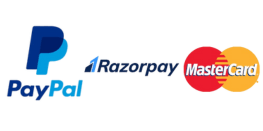
Baby Food Market Research Report By Types (Milk Formula, Dried, Ready-to-Feed, Other), By Category (Organic, Conventional), by Distribution Channel (Drugstores/ Pharmacies, Supermarkets/Hypermarkets, Convenience Store, Online Channels, Other Distribution Channels), by Ingredients (Fats and Oils, Lactose, Protein, Flour, Flavour Enhancer, Vitamins & Minerals, Others), and by Region- Global Forecast to 2034
June-2025 Formats | PDF | Category: Food and Beverages | Delivery: 24 to 72 Hours
“The Baby Food Market is expected to expand from 115.78 Billion in 2025 to $ 197.23 Billion in 2034, with a compound annual growth rate of 6.98% “
Baby Food Market: Overview and Growth in the Upcoming Year
The global Baby Food Market is expanding due to factors
similar as growing mindfulness of early nonage nutrition, rising disposable
income in developing nations, adding demand for high- end products, and the
adding need for accessible and movable options. The growing online retail
assiduity is also driving Market expansion, furnishing parents with access to a
variety of products. These factors are anticipated to continue driving the
Market’s growth in the coming times.
The baby food Market is passing growth due to parents’
growing mindfulness of the significance of natural and organic refections for
their babies, leading to a shift down from conventional packaged food. This
trend has urged businesses to acclimatize and offer healthier druthers to meet
client requirements.
Food safety enterprises and strict regulations in
constituents, packaging, and labeling
complicate product processes, adding costs and making it delicate for lower
businesses to contend with larger brands or enter new Markets.
The baby food Market faces challenges due to declining birth
rates and changing family arrangements, constricting its expansion eventuality.
As smaller children are born and further families conclude for manual druthers
, businesses must navigate these obstacles and constraints to remain
competitive and applicable in the evolving assiduity.
For Insights Consultancy’s latest market intelligence study, “Global Baby Food Market 2025, Growth Opportunities, and Forecast,” provides a comprehensive analysis of the Food industry. The report includes demand analysis, industry insights, competition intelligence, and a customer database. It also offers strategic insights into future trends, growth determinants, supplier landscape, demand landscape, CAGR, and pricing analysis. The study also includes Porter’s Five Forces Analysis, PESTLE Analysis, Value Chain Analysis, 4 Ps’ Analysis, Market Attractiveness Analysis, BPS Analysis, and Ecosystem Analysis.
*Note: Sample of the report provides details on the scope and coverage, table of contents, research methodology, and Sample Framework of the report. Actual report of 110+ is available for purchase to all the interested stakeholders.
Baby Food Market Key Takeaways
Regional Contribution to Market in 2024:
Regional Contribution to Market in 2024, Fastest Growing Region and Leading Region
Fastest Growing Region and Leading Region:
Leading Region in 2024: Asia-Pacific held the largest market share (64.16%) in the global Baby Food business in 2024, according to a number of sources. Growing awareness of child nutrition, rapid urbanisation, growing disposable incomes, and sizable baby populations in countries like China and India
Fastest Growing Region: The baby food market is expected to grow at the fastest rate in Asia-Pacific during the forecast period (2025–2034). Though some sources suggest that North America is the fastest-growing region in the organic baby food segment due to the rising demand for speciality, premium, and organic products, the market for all types of baby food is expected to grow at the fastest rate in Asia-Pacific due to the region’s large consumer base and changing lifestyles.
Market Breakdown by Type:
There are several broad categories into which the baby food market is separated:
Milk formula consistently holds the largest market share since it is the primary source of nutrition for infants. It includes infant formula, follow-on formula, and special medicinal formulas.
Dried baby food includes powdered cereals, freeze-dried meals, and dehydrated snacks.
Ready-to-Feed Baby Food: This category includes jarred baby food, meal kits, and pouches to make things easier for parents.
Other Types: These include healthy baby food, homemade baby food kits, and various baby snacks.
Fastest Growing Sub-Segment:
Even though infant milk formula currently holds the highest share, the prepared baby food segment—particularly pouches and meal kits—is generally considered to be the one with the fastest rate of growth. The reason for this is the increasing need for quick, ready-to-eat options that accommodate the hectic schedules of working parents. In the prepared Baby Food sector, baby snacks—especially those that feature vegetables and highlight portable, healthful options—are expanding rapidly. The organic baby food market is growing rapidly as more parents opt for natural, chemical-free goods.
Key Applications (2024 Market Share):
The word “applications” typically refers to the various product forms or the nutritional focus in the Baby Food industry. Taking into account the presented statistics for 2024:
For example, with an estimated $32.4 billion, infant formula makes up a significant amount of the prepared baby food industry.
Pureed fruits and vegetables and mixed meals also make up a sizable amount of sales in the prepared Baby Food sector.
Fastest Growing Application (Forecast Period 2025 to2034)
The baby snack market is expected to grow at the fastest rate throughout the forecast period (2025–2034), especially for products with clean labels and vegetable inclusions. The primary factors driving this increase include customer need for portable and easily transportable options, growing parental awareness of healthy snacking, and improvements in flavour and format. The ongoing trend of parents searching for “on-the-go” nutritional solutions for their toddlers is contributing to the market’s growth.
Report Attributes
|
Metric |
Details |
|
Market Size in 2025 |
USD 115.78 Billion |
|
Projected Market Size in 2034 |
USD $ 197.23 Billion |
|
CAGR (2025 – 2034) |
6.98% |
|
Market Segmentation |
By Application, by End-User, and By Region |
|
Top Key Players |
Danone S.A., Reckitt Benckiser (Mead Johnson & Company, LLC), Abbott, Feihe International Inc., Fries land Campina, Bellamy’s Organic, Kraft Heinz, HiPP GmbH & Co. Vertrieb KG, Perrigo, and Arla Food,Nestlé (Gerber Products Company) |
|
Customization Scope |
Report customization (equivalent to up to 4 analyst’s working days) with purchase. Addition or alteration to country, regional & segment scope. |
Top Companies Covered In This Report:
The Baby Food Market’s competitive environment provides a thorough examination of the major participants. Company summaries, financial results, revenue generation, market potential, R&D expenditures, new market strategies, regional presence, strengths and weaknesses, product launches, product range, and application leadership are some of the data it contains. These statistics particularly relate to the businesses’ operations and areas of concentration in the Baby Food market.
- Danone S.A.
- Reckitt Benckiser (Mead Johnson & Company LLC)
- Abbott
- Feihe International Inc.
- Fries land Campina
- Bellamy’s Organic
- Kraft Heinz
- HiPP GmbH & Co. Vertrieb KG
- Perrigo
- Arla Food
- Nestlé (Gerber Products Company)
Industry News
4-Mar-2025 Danone reaps strong infant formula sales in China, India in FY24
Danone says it has continued to gain shares in China’s infant formula market, while sales in India, especially the super premium sector, was “two times faster” than the market in FY24.
Jul 30, 2024 Abbott fined $500 million by US court for allegedly hiding fatal disease risk of infant formula
Mar 9, 2025 Plaint filed with Doon cops over baby food Company’s event
DEHRADUN: In spite of the health ministry and Indian Academy of Paediatrics (IAP) warning against doctors taking sponsorship from infant formula companies, Abbott Nutrition, a baby food company, went ahead with a two-day National Paediatric Summit at a 5-star hotel in Dehradun.
Detailed Segmentation and Classification of the report (Market Size and Forecast – 2034, Y-o-Y growth rate, and CAGR):
Segment By Category
- Organic
- Conventional
Segment By Type
- Milk Formula
- Dried
- Ready-to-Feed
- Other
Segment By Distribution Channel
- Drugstores/ Pharmacies
- Supermarkets/Hypermarkets
- Convenience Store
- Online Channels
- Other Distribution Channels
Segment by Ingredients
- Fats and Oils
- Lactose
- Protein
- Flour
- Flavour Enhancer
- Vitamins & Minerals
- Others
Segment by Formulation
- Powder
- Liquid
Segment By Health Benefit
- Brain & Eye Development
- Muscular Growth
- Bones & Teeth Development
- Blood Enhancement
- Nervous System
- Vascular System
- Body Energy
- Other
Regional Deep-dive Analysis:
The report provides in-depth qualitative and quantitative data on the Baby Food Market for all of the regions and countries listed below:
North America
United States
The US is the largest baby food market in North America, with a commanding market share. The primary drivers of its growth are parents’ extensive understanding of early childhood nutrition and their willingness to spend money on high-quality products. The increasing number of working parents has led to a strong demand for convenient, ready-to-eat options like meal kits and pouches. Organic, non-GMO, and clean-label baby food is becoming increasingly popular as consumers’ worries about artificial additives and pesticides grow. Innovation in product formulation, such as fortified options with probiotics, iron, and DHA, is a significant trend.
Canada
The baby food market in Canada is a lucrative and growing industry in North America, with high compound annual growth. Premium, natural, and organic products have a sizable market in Canada since Canadian parents place a high importance on healthy, high-quality baby food. Similar to the US, there is a great demand for convenient, ready-to-eat Baby Food options because working women and dual-income households are becoming more prevalent.
Mexico
Mexico’s baby food market is growing rapidly, particularly in the organic and fortified categories. Mexican families are more reliant on infant formulas and quick, ready-to-eat baby meals because of their hectic schedules brought on by the country’s rising urbanisation and changing lifestyles. As more parents realise how important a nutritious diet is for a child’s early development, there is a growing demand for fortified goods that contain essential minerals like iron and DHA. Growing disposable incomes, especially among the urban middle class, have led to a rise in the demand for premium, clean-label, and organic-certified Baby Food.
Asia-Pacific
China
China now has the largest Baby Food market in Asia-Pacific due to its massive population and changing government policies, such as the implementation of a three-child policy, which is expected to raise birth rates. Chinese parents have a significant need for safe, upscale, and premium Baby Food items, particularly formula, because of their high disposable incomes. Concerns about food safety have led to stricter government regulations, which have increased consumer confidence in reputable brands. Pre-packaged snacks and convenient, ready-to-eat baby meals are growing in popularity as a result of westernisation and busy urban lifestyles. Online retail channels are becoming increasingly significant in the distribution of products.
India
Due to the large and growing number of infants in the nation, parents’ growing health consciousness, and rising disposable incomes, the baby food market in India is growing quickly. Fortified Baby Food products improved with essential micronutrients are in high demand in the business as a means of combating malnutrition. Natural and organic baby food is becoming more and more popular as parents seek products free of artificial additives and preservatives. Government initiatives that support child nutrition, such as POSHAN Abhiyaan, also aid in market expansion. In urban areas in particular, the expansion of modern retail channels and the flourishing e-commerce sector are improving product accessibility.
Japan
Despite its maturity, Japan’s Baby Food industry stands out for its significant emphasis on high-quality, safe products that are appropriate for those with allergies. Even though the birth rate is declining, there is a significant demand for easy-to-prepare, convenient baby food because more women are entering the job. There is a sizable market for prepared baby foods and specialist formulas because Japanese consumers place a high emphasis on product safety and nutritional content. In the event of an emergency or natural disaster, manufacturers are focusing on developing innovative recipes and packaging that offer convenience. Traditional preferences for handmade baby food also have an impact on the market, even as more marketed options are being offered due to modern lifestyles.
South Korea
The Baby Food market in South Korea is growing steadily, although being smaller than that in China and India. The market is greatly impacted by the low birth rate in the country, which pushes manufacturers to focus on expensive and valuable products. Because South Korean parents place a high emphasis on product safety and nutritional effectiveness, there is a great demand for organic, specialist infant formulas, and baby foods that satisfy specific dietary requirements. Because of busy urban lives, convenience is a major factor in the utilisation of ready-to-eat products. Speciality baby goods stores and online shopping are important distribution channels.
Europe
Germany
Particularly when it comes to organic products, Germany is a significant player in the European Baby Food market. The market as a whole is experiencing moderate volume growth due to the long history of handmade baby food and a low birth rate, but some segments, like powder special milk formula, are thriving. Organic, non-GMO, and responsibly sourced products are in high demand since German parents are extremely ingredient cautious. Important distribution channels include pharmacies and health and beauty specialists, and major firms place a high value on customer loyalty and innovation. The increasing number of working women has created a strong demand for convenient options, and plant-based baby food is gaining popularity.
France
The most popular product in the French baby food market is still milk formula, which serves as a substitute for mother’s milk and a supply of essential nutrients. Even if some sources indicate a slight decline in the overall market volume due to factors like parental preferences changing towards homemade cuisine, the market is nevertheless impacted by growing health consciousness and the number of working parents. Baby Food that is derived responsibly and organically is growing in popularity, particularly in urban areas. Strict government regulations governing food safety are crucial, and internet retailers are growing in popularity due to their ease of use and extensive product selection.
United Kingdom
Due to shifting consumer preferences and increased knowledge of newborn nutrition, the baby food business in the UK is developing gradually. There is a discernible trend towards natural and organic Baby Food, with a significant percentage of parents selecting organic products. Convenience is a significant aspect that is increasing demand for ready-to-feed products and single-serve pouches. Even with improvements in plant-based and hypoallergenic formulas, baby formula remains the largest market category. Baby snacks and finger meals are also growing quickly. Sales channels are still dominated by supermarkets, but they are evolving due to e-commerce and online food platforms.
Italy
The Italian Baby Food industry is having some challenges due to a forecasted decline in retail volume caused by a dropping birth rate, unstable economic conditions, and the high cost of raising children. Nevertheless, as they search for natural and wholesome options, parents are increasingly selecting organic baby food products. Due to the rising cost of packaged baby food, some parents are opting to prepare their own meals. However, demand for other categories, like wet meals, is still influenced by convenience. Products designed for various stages of a child’s development are the focus of manufacturers, and pharmacies, supermarkets, and hypermarkets are crucial distribution channels.
Spain
Low birth rates have an effect on the baby food market in Spain, which has led to a continuous decline in baby food sales volume. However, it is expected that the market for organic baby food will grow. Spanish parents are increasingly searching for high-quality, nutritious, and convenient options. Baby milks, particularly powdered types, continue to hold a significant share of the market, despite the growing popularity of liquid milk due to its convenience. Supermarkets, pharmacies, and drugstores are the primary distribution channels. Big manufacturers are focusing on product innovation to address shifting consumer preferences and health concerns.
Russia
The Russian Baby Food industry is growing quickly as a result of an increase in dual-income households and a stronger focus on child nutrition. Baby foods that are convenient, ready to eat, and fortified are gaining popularity. As more Russian parents opt for organic and preservative-free baby food products, this sector is expanding. The continued expansion of modern retail channels, both online and offline, is improving access to a wider variety of Baby Food products across the country. Milk formula has always been an important sector, and e-commerce is becoming a vital sales channel, especially in cities.
Middle East and Africa
Saudi Arabia
Saudi Arabia dominates the baby food business in the Middle East and Africa. Its rise is being driven by a large and growing population, rising urbanisation, and rising disposable incomes. Organic, clean-label, and specialised baby food products are in high demand as a result of Saudi parents’ increased worries about the ingredients in their kids’ diets. Because of the increasing number of working women and their hectic lifestyles, there is a great need for convenient, ready-to-feed baby foods and formulas. E-commerce websites are crucial for expanding one’s customer base and offering a wider selection of specialist and international products. Government regulations that ensure product safety also have an impact on consumer trust.
UAE
The UAE baby food market is defined by a wealthy expat population and a strong demand for upscale, internationally recognised infant food brands. Despite a relatively low birth rate, the market is supported by parents’ high purchasing power and awareness of health and welfare. Baby food products that are natural and organic are becoming more and more popular. With the nation’s retail industry developing and the number of working women increasing, there is a significant need for convenient, ready-to-feed alternatives. Despite the fact that imports have historically controlled the market, innovative innovations like baby food items manufactured from camel milk and certified halal are welcomed. E-commerce continues to grow significantly due to busy lives.
South Africa
South Africa’s baby food business is rising steadily, primarily as a result of parents’ increasing disposable incomes and willingness to spend money on high-quality baby products. Infant milk formula continues to be the market category with the highest revenue generation and the fastest rate of growth. Easy commercial solutions are becoming more and more popular, especially among working women, despite the continued popularity of homemade meals due to the growing recognition of infants’ nutritional needs. The advertising of infant formula is, however, somewhat hampered by government regulations that support breastfeeding. It is anticipated that Cape Town and other cities will have a large portion of the market. It is anticipated that the market will expand gradually but steadily overall.
Nigeria
Despite challenges including growing inflation that lowers consumer spending power, Nigeria’s baby food sector is booming. Despite this, the industry is anticipated to rise, especially as more working mothers and people realise how important it is to meet the nutritional needs of babies. Despite the availability of options for budget-conscious consumers, there is still a desire for convenient and enriched baby food products. Milk and milk formula are the market segments that are expanding at the quickest rate. Important strategies include fortification with essential elements like iron, organic trends, health consciousness, and product variety. The expansion of modern retail and online platforms is improving product accessibility across the country.
The research provides answers to the following key questions:
- What is the expected growth rate of the Baby Food Market from 2025-2034?
- What are the key driving forces shaping the market during the forecast period?
- Who are the major market vendors and what winning strategies have helped them occupy a strong foothold in the Baby Food Market?
- What are the prominent market trends influencing the market’s development?
Key insights provided by the report that could help you take critical strategic decisions?
- Regional reports analyse product/service consumption and market factors in each region.
- Reports highlight possibilities and dangers for suppliers in the Baby Food Market business globally.
- The report identifies regions and sectors with the highest growth potential.
- It provides a competitive market ranking of major companies, as well as information on new product launches, partnerships, business expansions, and acquisitions.
- The report includes a comprehensive corporate profile with company overviews, insights, product benchmarks, and SWOT analysis for key market participants.
Customization: We can provide following things
1) On request more company profiles (competitors)
2) Data about particular country or region
3) We will incorporate the same with no additional cost (Post conducting feasibility).
Any Requirement Contact us: https://forinsightsconsultancy.com/contact-us/
Table of Contents
For TOC Contact us: https://forinsightsconsultancy.com/contact-us/







